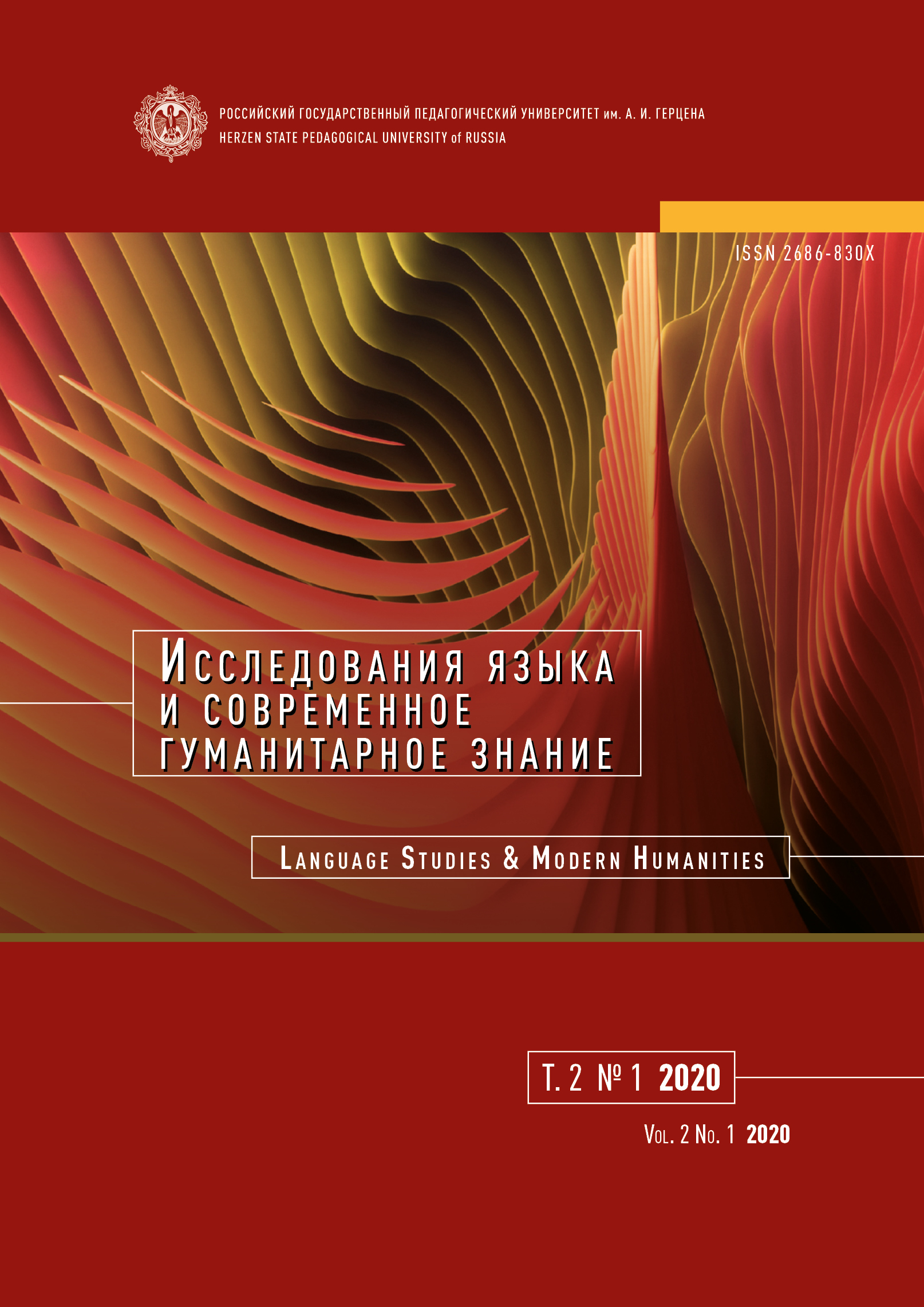In search of culture non-specific linguistic mechanisms of language adaptation to external cultures
DOI:
https://doi.org/10.33910/2686-830X-2020-2-1-5-11Ключевые слова:
linguoculture, culturonym, xenonym, interlinguoculturology, loan, language adaptationАннотация
With English functioning as the global lingua franca of the modern world, actively employed to discuss, describe and promote all there is under the heaven, the paper focuses on the linguistic mechanisms of English “re-nationalization”, that is its adaptation to other cultures, originally external to it, which it might be called to describe.
Since the goal of this paper is to illustrate that the secondary cultural orientation of language follows certain general principles and the linguistic mechanisms are the same regardless of the culture being described, we left the culture factor as the only variable (Russian vs. Transoxanian region), restricting the empirical data to texts similar in genre and addressee (culturological research for relatively wide readership) and temporal parameters (time of creation).
The selected empirical data was then analysed on the phono-graphical, lexical and architectonic levels in relation to the way they are affected by the text’s secondary cultural orientation.
The conducted comparison of two independent researches dedicated to the Russian and Transoxanian region’s cultures revealed some striking similarities, which are by no means coincidental. Rather the results summed up in the present paper confirm our hypothesis that a language adaptation to the task of describing an external culture is based on certain strategies; at that both the scope of these strategies and the factors affecting their choice are universal and show no dependence on the culture being described.
Библиографические ссылки
SOURCES
Levin, T. (1996) The hundred thousand fools of God: Musical travels in Central Asia (and Queens, New York). Bloomington: Indiana University Press, 318 p. (In English)
MacLeod, A. (2012) Boyar Davidovitch. München: BookRix, 6 p. [Online]. Available at: https://www.bookrix.com/_ebook-alastair-macleod-boyar-davidovitch/ (accessed 03.10.2019). (In English)
Sperling, V. (1999) Organizing women in contemporary Russia: Engendering transition. Cambridge; New York: Cambridge University Press, 303 p. (In English)
REFERENCES
Görlach, M. (1988) The development of Standard Englishes. In: Studies in the History of the English Language. Heidelberg: Carl Winter, pp. 9–64. (In English)
Kabakchi, V. V. (1998) Osnovy angloyazychnoj mezhkul’turnoj kommunikatsii [Fundamentals of the English-language intercultural communication]. Saint Petersburg: Herzen State Pedagogical University of Russia Publ., 228 p. (In Russian)
Kabakchi, V. V. (2007) Tipologiya teksta inoyazychnogo opisaniya kul’tury i inolingvokul’turnyj substrat [Typology of texts describing culture by means of foreign language and external linguocultural substrate]. In: V. E. Chernyavskaya (ed.). Lingvistika teksta i diskursivnyj analiz: traditsii i perspektivy [Text linguistics and discourse analysis: Traditions and prospects]. Saint Petersburg: Saint Petersburg State University of Economics and Finance Publ., pp. 51–70. (In Russian)
Kabakchi, V. V. (2012) Formation of Russian-Culture-Orientated English. Journal of Siberian Federal University. Humanities & Social Sciences, vol. 5, no. 6, pp. 812–822. (In English)
Kabakchi, V. V., Yuzefovich, N. G. (2007) Transliteratsiya rusizmov v angloyazychnom opisanii russkoj kul’tury (k stoletiyu poiskov sistemy transliteratsii rusizmov) [Transliteration of Russicisms in the English-speaking description of Russian culture (on the centenary of searches of transliteration system of Russicisms)]. Sotsial’nye i gumanitarnye nauki na Dal’nem Vostoke — The Humanities And Social Studies in the Far East, no. 3 (15), pp. 115–124. (In Russian)
Kachru, B. B. (ed.). (1982) The other tongue: English across cultures. Urbana, IL: University of Illinois Press, 358 p. (In English)
Kachru, B. B. (1994) Englishization and contact linguistics. World Englishes, vol. 13, no. 2, pp. 135–154. DOI: 10.1111/j.1467-971X.1994.tb00303.x (In English)
McArthur, T. (1987) The English languages? English Today, vol. 3, no. 3, pp. 9–13. DOI: 10.1017/S0266078400013511 (In English)
Proshina, Z. G. (2018) Intervarietal translation and the theory of intelligibility. World Englishes, vol. 37, no. 3, pp. 503–510. DOI: 10.1111/weng.12339 (In English)
Quirk, R. (1988) The question of standards in the international use of English. In: P. H. Lowenberg (ed.). Language spread and language policy: Issues, implication, and case studies. Washington, DC: Georgetown University Press, pp. 229–241. (In English)
Smith, L. E. (1976) English as an international auxiliary language. RELC Journal, vol. 7, no. 2, pp. 38–42. DOI: 10.1177/003368827600700205 (In English)
Загрузки
Опубликован
Выпуск
Раздел
Лицензия
Copyright (c) 2020 Елена Владимировна Белоглазова

Это произведение доступно по лицензии Creative Commons «Attribution-NonCommercial» («Атрибуция — Некоммерческое использование») 4.0 Всемирная.
Авторы предоставляют материалы на условиях публичной оферты и лицензии CC BY 4.0. Эта лицензия позволяет неограниченному кругу лиц копировать и распространять материал на любом носителе и в любом формате в любых целях, делать ремиксы, видоизменять, и создавать новое, опираясь на этот материал в любых целях, включая коммерческие.
Данная лицензия сохраняет за автором права на статью, но разрешает другим свободно распространять, использовать и адаптировать работу при обязательном условии указания авторства. Пользователи должны предоставить корректную ссылку на оригинальную публикацию в нашем журнале, указать имена авторов и отметить факт внесения изменений (если таковые были).
Авторские права сохраняются за авторами. Лицензия CC BY 4.0 не передает права третьим лицам, а лишь предоставляет пользователям заранее данное разрешение на использование при соблюдении условия атрибуции. Любое использование будет происходить на условиях этой лицензии. Право на номер журнала как составное произведение принадлежит издателю.







